Featured image courtesy of Brian Douglas
In the early 1950s, the Lavender Scare was in full swing, with Senators McCarthy and Peurifoy warning Congress of homosexuals infiltrating America’s creative and political organizations. The Mattachine Society — the first American gay rights organization — was formed in Los Angeles. Dr. Alfred Kinsey’s report on sexuality began revolutionizing the way we think about hooking up. And a Little Lesbian Pulp Fiction Novel That Could, written by Claire Morgan and priced around $0.50, hit drugstore stands.
Nearly forty years would pass before Patricia Highsmith (author of The Talented Mr. Ripley and Strangers on a Train) would admit to being the pseudonymous writer of this book, The Price of Salt. “The appeal of The Price of Salt was that it had a happy ending for its two main characters, or at least they were going to try to have a future together,” Highsmith wrote as an afterword for the novel’s 1990 reissue. “Prior to this book, homosexuals male and female in American novels had had to pay for their deviation by cutting their wrists, drowning themselves in a swimming pool, or by switching to heterosexuality, or by collapsing — alone and miserable and shunned — into a depression equal to hell.”
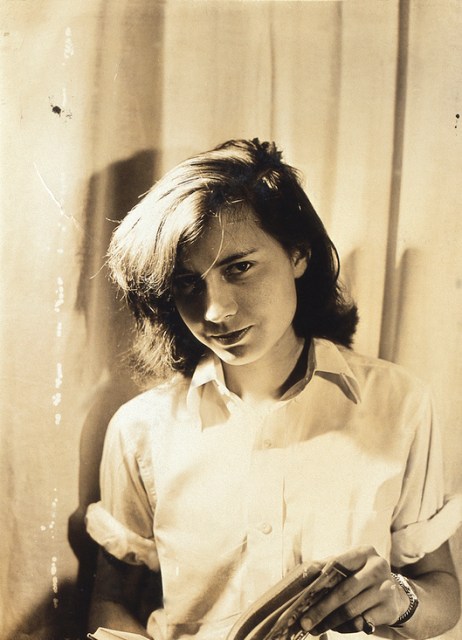
Young Patricia Highsmith, 1942
If you were a lesbian and wanted to write lovely stories about other lesbians in the 1950s, you could… but you’d have to jump through a hell of a lot of hoops. Not only did the first queer pulp fiction authors run the risk of tarnishing their own literary careers (hence Highsmith’s use of a pen name, Claire Morgan, when publishing The Price of Salt); their characters were restricted by harsh, unspoken guidelines. In a way, gay writers who were censored before their words were even written became pawns of the Red Scare, their work serving as anti-communist propaganda that sent a clear message: homosexuality had devastating consequences.
“They not only had to be punished,” lesbian pulp veteran Ann Bannon reiterated when discussing her own gay girl protagonists in 2012. “In order to shut up Senator McCarthy and all of the morality cops, they had to be punished because as a result of those guys, the Post Office would not deliver the books unless one of the women had committed suicide, gone nuts, or been killed.”
In the years since its first publication in 1952, The Price of Salt has done unusually well commercially (Highsmith stated that it had already sold a million copies by 1989; the book’s cover claims half of that amount), and many of today’s contemporary gay writers have cited it as a favorite, including The Miseducation of Cameron Post’s emily m. danforth and current Guggenheim fellow Alison Bechdel. Even the High Empress of Seriousness, Susan Sontag, adored Highsmith’s Sapphic paperback romance:
Something in the story – about a gifted (yet insecure) young woman who moves to Manhattan in the early 1950s to become a theatre designer and ends up falling rapturously in love with a glamorous, outré older woman – must have once struck a chord: Sontag seemed to dote on it.
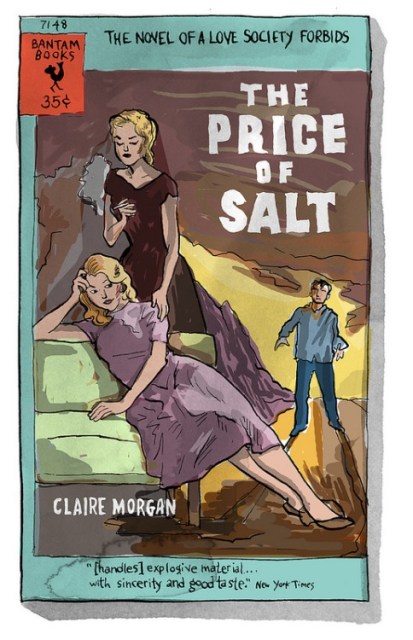
Alison Bechdel’s recreation of The Price of Salt‘s vintage cover
The Price of Salt is a classic because it offered the very first happy ending for lesbian couples, but also because the book is very well-written. Its 288 pages indulge the reader’s desire for lezzie drama and romance (“Then Carol slipped her arm under her neck, and all the length of their bodies touched fitting as if something had prearranged it…”) but also offer a uniquely Highsmith dose of mystery and tension:
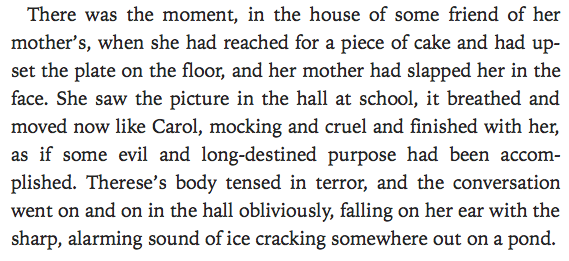
Somewhere in Switzerland’s Cimitero di Tegna, Highsmith is rolling at her grave as her “dykey little potboiler” achieves another series of firsts: The Price of Salt is the first lesbian pulp to be made into a movie, and one with a multi-million dollar budget, a notable cast (Cate Blanchett, Rooney Mara, Sarah Paulson, Carrie Brownstein, Kyle Chandler), a three-time Oscar winning costume designer (Sandy Powell), an Emmy-nominated lesbian screenwriter (Phyllis Nagy) and talented director (Todd Haynes) at its helm. Titled Carol, the period film is set for release sometime in spring 2015.
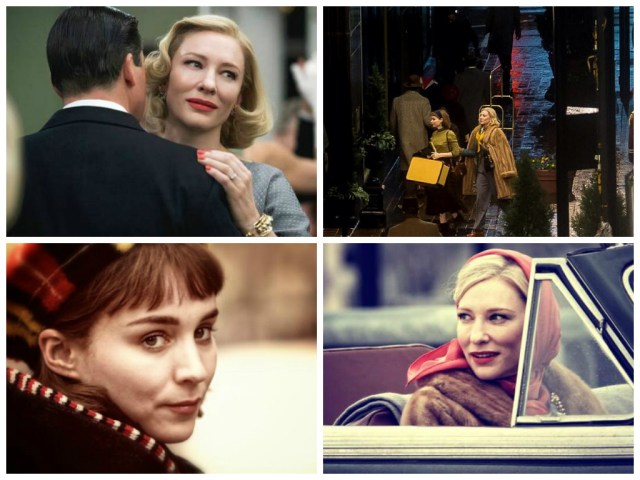
Production stills and set photos from Carol (2015)
As to be expected, there are a few differences between the book and movie. In Carol, Therese moonlights as a photographer instead of an aspiring theater set designer as she did in the novel. Sleater-Kinney’s Carrie Brownstein’s role as Genevieve Cantrell, a character who has an “encounter” with Therese, has been heavily edited down. But for the most part, Carol seems to stick closely to Highsmith’s original story. I’m looking forward to seeing Sarah Paulson play Carol’s know-it-all ex-lover Abby (who I hope will be as 100% tough, 0% cookie as Paulson’s Lana Winters in American Horror Story: Asylum). It should also be exciting to watch Kyle Chandler – who I’m all too accustomed to seeing decked out in empowering speeches and dad jeans as Coach Taylor in Friday Night Lights reruns – play a patriarchal villain.
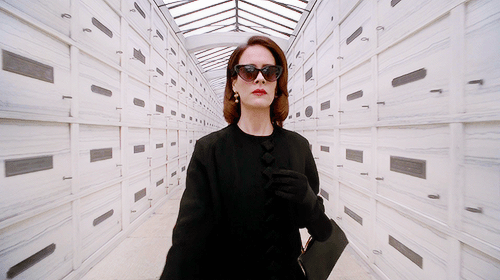
Sarah Paulson as Lana Winters in American Horror Story: Asylum
Because Rooney Mara as a mousey Therese and Cate Blanchett as a femme fetale Carol are so undeniable and goshdarn pretty, it’s easy to forget that Carol is yet another film about homosexual women that is directed by a man. But that’s still important, particularly when this project has all the trappings of a blockbuster. It’s natural to want the film adaptation of one of the most important works of lesbian lit to do it justice. It’s also natural to be fiercely protective of narratives that intimately resemble our own stories of marginalization. And when the last two male-directed critically-acclaimed films exploring the vast terrain of lesbianism left some of us feeling like erotic Freudian doppelgängers and artistic products of the male gaze, it’s definitely natural for queer women to distrust the men who are essentially directing our lives: will they ever get it right?
Fortunately, director Todd Haynes excels at the queerly feminine. His previous subjects include a hodgepodge of housewives and glamorous pop stars, from Great Depression mamas with tons of gumption to a white woman in love with a black man during the Jim Crow era to Karen Carpenter and Ziggy Stardust. His willingness to take on stories that aren’t considered marketable speaks volumes, as are his creative partnerships with women like costume designer Sandy Powell and Cate Blanchett (whom Haynes also directed as Bob Dylan in I’m Not There). And for those to whom social justice cred matters, Haynes was a member of Gran Fury, the artist collective that worked on reproductive health-related visual campaigns at the height of the AIDS epidemic.
Women seem to be more than just colleagues and creative subjects for Haynes; they are also inspiration. In recent interviews, Haynes discussed how Carol has a rougher feel than his previous film that was set in the 1950s, and how he looked to midcentury New York City photographers like Ruth Orkin and (rumored lesbian) Vivian Maier for pointers:
You know, it’s set in the ’50s, and it’s a very different kind of ’50s film than Far from Heaven was. The feel of it is much less inspired by ’50s cinema, and more by, I guess, photojournalism and a lot of the art photography we were seeing at the time, which has much more gritty… it’s a very poised film, because it has a real sense of control to it. The look of it is much more distressed.
It’s set in the early ’50s, before the Eisenhower era had really taken hold. It was a really transformational and unstable time from the war years into the beginning to what would become the ’50s as we know them. The historical imagery and references we uncovered showed New York was really like an old-world city in great duress: very dirty, very dingy, and very neglected.
I thought it was such an interesting place to mount this, ultimately, very pure and simple love story between a younger woman and older woman at the most unexpected cultural moment and place.
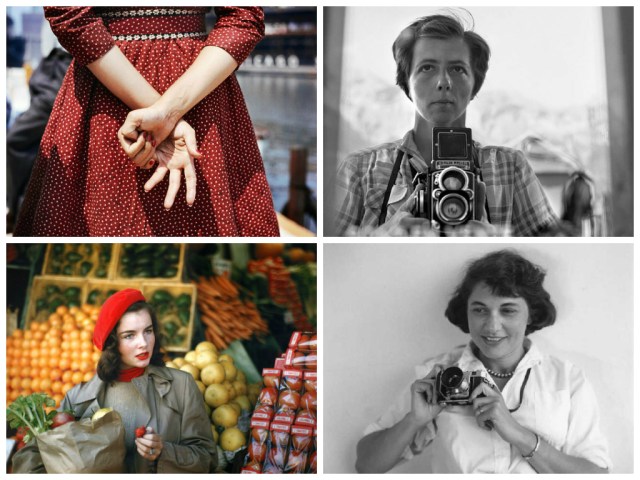
Vivian Maier (top) and Ruth Orkin (bottom)
Aside from a few folks who saw bits of Carol at Cannes this year or attended readings of the script, the word is still out on whether this will be the “lesbian Brokeback Mountain” that’s been talked about for years. Hopefully this adaptation go will further than that and become the Little Movie That Could to Highsmith’s Little Book That Could, going down in history as being a work of queer art so good that no one could deny it.

Reading this article has me a bit excited to see this movie.
Looking forward to this movie
I have been waiting on this movie since it was first announced what feels like forever ago. It’s got all my faves in it. I hope it really does come out this year. Considering the fact that it’s Blanchett, who seems to garner an Oscar nom for most of the films she appears in, I have a feeling they will release it as close to awards season as possible.
Haynes has said it’ll be in festivals come spring, but yes re: late 2k15 select & wide release. A majority of the film is set during the holiday season, too.
Cate Blanchett has been in over 50 films. She’s had 6 Oscar nominations.
Yes Todd Haynes is a man but you’re erasing the fact that he is a gay man and one of the main components of New Queer Cinema in the 90’s. Dude knows his way around queer-issues.
Not erasing–I love Haynes’ work and have sobbed into Jiffy Pop while Far From Heaven than I can count; just acknowledging that a lot of queer women have justifiable reservations concerning male-directed sapphism.
Also, a gay male director does not a lesbian expert make!
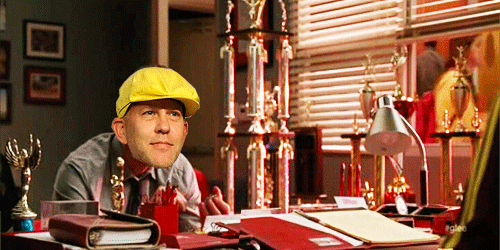
Indeed, fonseca
Velvet Goldmine informed my nascent queer identity, so I will probably go see this.
OH. MY. GUH.
I am so excited. I love this book. I love Cate Blanchet. I love Carrie Brownstein. I love Sarah Paulson. How have I not heard of this before this is like the best late Christmas present ever auuugh!!!!!
Also, roll on more mainstream blockbusters with gay leads… still a pretty huge rareity despite various indie successes…
Wow just wow! :) :) :)
If they stick to the book, the encounter with Genevieve will take place in a hotel room during a crowded party, not a bedroom. Sexual tension will abound, though (felt by the characters according to the book, I mean; not just the one most of us will be projecting onto it).
“moonlights as a photographer instead of an aspiring theater set designer” I was looking forward to seeing how they translated the set design descriptions given in the book into actual little cardboard models. Major complaint, of course, but I’ll still watch the movie. Twist my arm, etc.
EXCITEMENT.
And yes, I was also looking forward to the inevitable close-ups within intricate little set models. I’m wondering if Therese’s character revamp was inspired by Vivian Maier’s work…
“And when the last two male-directed critically-acclaimed films exploring the vast terrain of lesbianism left some of us feeling like erotic Freudian doppelgängers and artistic products of the male gaze, it’s definitely natural for queer women to distrust the men who are essentially directing our lives: will they ever get it right?”
Give it a break. This nonsense is tiring. I certainly saw more of myself in Blue is the Warmest Color than than the desexualized couple in The Kids Are All Right or the abundant supply of cheesy lesbian films made by lesbians.
Here is what matters. Is the film good and is it dead on. Blue is the Warmest Color was fantastic, The Edge of Heaven was shattering, and Show Me Love may just be the best teen romance of the last 25 years. While Imagine Me and You may not be a classic like those other two, it is a lovely movie. All of them were made by straight men.
Also if you don’t know what the term “male gaze” means maybe you shouldn’t use it. It is quickly approaching the word “irony” when it comes to misuse.
There are great lesbian filmmakers out there. Celine Sciammi may be the best under 40 filmmaker in the world. Kimberly Pierce is talented and that she has not been given more chances is terrible. With the exception of The Kids Are All Right, Lisa Cholodenko’s output has been superb including the magnificent Olive Kitteridge. Of course they deserve more opportunity. However this whining about men, whether straight or gay, making films that depict the lives of lesbians is as insufferable as Pauline Kael’s mocking of George Cukor when he directed films about straight women.
When some of the world’s best directors such as Moodysson, Kechiche, and now Haynes make films about romances between women I am excited by how talented these directors are. Instead, by complaining, we only support the straight people, often older women, who in truth don’t want the stories told unless, as with The Kids Are All Right, a man is the catalyst. Love is a universal experience and when we unknowingly support those who want to act as if it isn’t, we don’t do ourselves any favor.
I really don’t care that this film is being directed by a bloke. Often the lesbian films with a lesbian director at the helm turn out to be hugely disappointing (I just deleted The Kids are All Right from my hardrive the other day, don’t know why it was still on there). My favourite lesbian film, Imagine Me & You, was made by a straight guy. I’m 100% behind Tood Hayes, who is exceptionally talented
I am so unbelievably excited for this movie. In fact, I was even thinking the other day that I might be looking forward to the Price of Salt more than the new Star Wars flick…and that is almost sacrilege to admit. A glorious cast bringing to life one of my favourite books, what can be more exciting? I just wish they’d hurry up and release a trailer at least.
There is a brilliant tumblr that brings together all the news about the film http://missbelivet.tumblr.com/
Good grief I am so excited for this movie! Thanks for a great little preview!
This had so better make it to at least one Utah theatre!
I read this article, got excited and thus bought the book online. It arrived today and it’s the size of a textbook…can’t imagine myself whipping it out of my bag at the coffee shop for a quick read with my chai. ..although if I was trying to flag it’d be perfect! Bizarre.
Something worth noting that was not mentioned in regard to the “male gaze” discussion is that yes, the film does have a male director (who produces beautiful work in his own right)–but one of the film’s producers is Christine Vachon, an extremely successful and influential openly gay woman. Without her, and the other producers of the film, it would have never been made.
Here’s her wikipedia bio of awesome: http://en.wikipedia.org/wiki/Christine_Vachon
I am SO excited this pulp is finally being made into a movie! I thought Lisa Cholodenko was going to make it some years back, but it never happened. Salt is a great story. Classic Highsmith! There’s a website called SheWinked.com that has republished many of the rare classic lesbian pulps. They have The Price of Salt and some of Ann Bannon’s books, too, I think.
Gotta see anything involving Blanchette. Especially this.